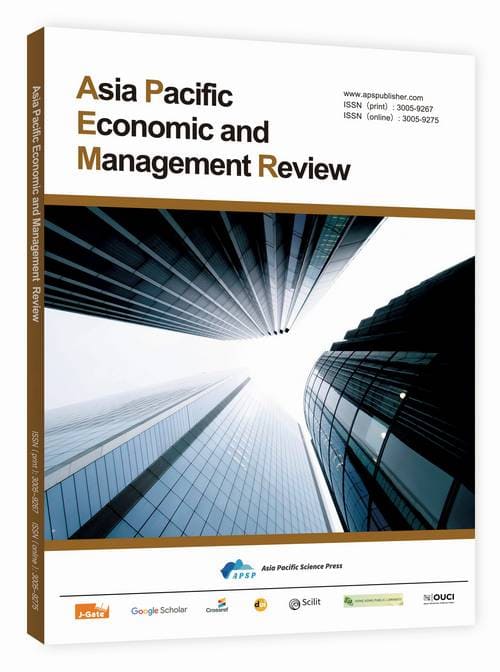A Study on the Theoretical Evolution, Practical Dilemmas, and Policy Innovations in Enhancing Rural Social Welfare
DOI:
https://doi.org/10.62177/apemr.v2i5.823Keywords:
Social Welfare, Urban–Rural Integration, Rural Revitalization, Socialization of WelfareAbstract
China’s long-standing social welfare system has exhibited a distinct urban bias, resulting in institutional segmentation between urban and rural welfare frameworks. Consequently, rural residents experience significantly lower levels of social security and public services compared with their urban counterparts. Guided by the macro policy orientation of the Rural Revitalization Strategy, this paper examines the theoretical foundations and explores the policy innovation pathways for improving rural social welfare. Existing research indicates that the current rural welfare system faces three major issues: first, the overall level of welfare provision remains low, with a pronounced urban–rural gap; second, the structure of welfare providers is highly homogeneous, characterized by “remedial” and “relief-oriented” features; and third, the welfare content lacks multi-dimensionality, as economic subsidies continue to dominate the social security system, with insufficient comprehensive social support. Based on the conceptual connotations and functional definitions of social welfare, this study explores the institutional logic and practical feasibility of reform. On this basis, it compares two pathways for improvement—enhancing the degree of rural-to-urban integration (“rural population urbanization”) and strengthening local rural welfare development—by examining their respective advantages and limitations. Finally, the paper proposes targeted policy recommendations for optimizing the rural social welfare system, with the goal of offering theoretical insights and practical guidance for achieving welfare equality between urban and rural areas and advancing the overarching goal of common prosperity.
Downloads
References
Titmuss, R. M. (1975). Social policy: An introduction.
Spicker, P. (2014). Social policy: Theory and practice. Policy Press. DOI: https://doi.org/10.51952/9781447316138
Esping-Andersen, G. (1990). The three worlds of welfare capitalism. Princeton University Press. DOI: https://doi.org/10.1177/095892879100100108
Smart, A., & Smart, J. (2001). Local citizenship: welfare reform urban/rural status, and exclusion in China. Environment and Planning A, 33(10), 1853-1869. DOI: https://doi.org/10.1068/a3454
Whyte, M. (2010). Myth of the social volcano: Perceptions of inequality and distributive injustice in contemporary China. Stanford University Press.
Pinker, R., & Wong, L. (2005). Marginalization and social welfare in China. Routledge.
Duckett, J. (2012). The Chinese state's retreat from health: Policy and the politics of retrenchment. Routledge. DOI: https://doi.org/10.4324/9780203840726
Gao, Q. (2017). Welfare, work, and poverty: Social assistance in China. Oxford University Press. DOI: https://doi.org/10.1093/oso/9780190218133.001.0001
Chen, K. Z., Mao, R., & Zhou, Y. (2023). Rurbanomics for common prosperity: new approach to integrated urban-rural development. China Agricultural Economic Review, 15(1), 1-16. DOI: https://doi.org/10.1108/CAER-12-2021-0256
Feng, Z., Robinson, G. M., & Tan, Y. (2025). Rural Revitalization in China: Reversing Rural Decline and Eliminating Poverty. Geography Compass, 19(7), e70039. DOI: https://doi.org/10.1111/gec3.70039
Liu, J., Wei, K., & Shuai, Q. (2025). Impact of the new round of Hukou system reforms on rural household development resilience in China. Scientific Reports, 15(1), 17098. DOI: https://doi.org/10.1038/s41598-025-01783-9
Wang, Z., Liu, C., & Tian, Y. (2025). The Effect of Urban–Rural Public Service Gaps on Consumption Gaps Under the Perspective of Sustainable Development: Evidence from China. Sustainability, 17(13), 6148. DOI: https://doi.org/10.3390/su17136148
Zhao, X., Yang, S., Li, S., & Gao, Q. (2025). More urban-rural integrated Chinese social welfare: how do the education benefits improve the picture?. Journal of Asian Economics, 101940. DOI: https://doi.org/10.1016/j.asieco.2025.101940
Chen, D., & Fang, X. (2025). Social assistance and non-agriculture employment in rural China: evidence from the Rural Minimum Living Security (Rural Dibao). Humanities and Social Sciences Communications, 12(1), 1-11. DOI: https://doi.org/10.1057/s41599-025-04443-5
Han, Y., & Huang, J. (2019). Evolution of social welfare in rural China: A developmental approach. International Social Work, 62(1), 390-404. DOI: https://doi.org/10.1177/0020872817731140
Pan Jinyun, & Li Yanshu. (2009). Modern agricultural service industry: An industrial path to promote agriculture through industry. Economist , 9 , 61-67.
Ma, L., He, Q., Long, H., Zhang, Y., & Liao, L. (2024). Rural return migration in the post COVID-19 China: Incentives and barriers. Journal of Rural Studies, 107, 103258. DOI: https://doi.org/10.1016/j.jrurstud.2024.103258
Sun, J., Chen, S., & Tian, M. (2024). Retain in the city, return flow, or blind direction: a study on the differentiation mechanism of migrant workers’ migration willingness under the background of China’s strategy for Integrated Urban–Rural Development. Sustainability, 16(19), 8304. DOI: https://doi.org/10.3390/su16198304
Chen, L., Li, M., & Huang, Y. (2025). From industry to education-driven urbanization: A welfare transformation of urbanization in Chinese counties. Habitat International, 155, 103248. DOI: https://doi.org/10.1016/j.habitatint.2024.103248
Xiang, Q., Li, J., & Liu, G. (2024). The impact of rural collective property rights reform on income and poverty reduction: Evidence from China’s rural regions. Plos one, 19(9), e0308393. DOI: https://doi.org/10.1371/journal.pone.0308393
Dunford, M. (2022). The Chinese path to common prosperity. International Critical Thought, 12(1), 35-54. DOI: https://doi.org/10.1080/21598282.2022.2025561
Zhang, Y. (2025). The dual-track paradox in social welfare—a layered governance perspective. Humanities and Social Sciences Communications, 12(1), 1-14. DOI: https://doi.org/10.1057/s41599-025-05601-5
Downloads
How to Cite
Issue
Section
License
Copyright (c) 2025 Yuan Wei

This work is licensed under a Creative Commons Attribution-NonCommercial 4.0 International License.

















